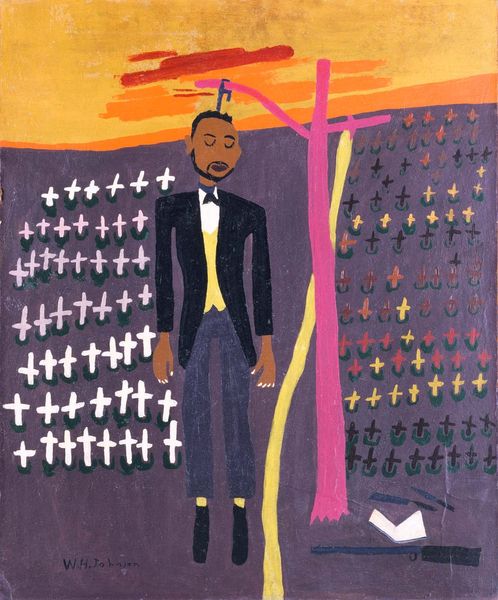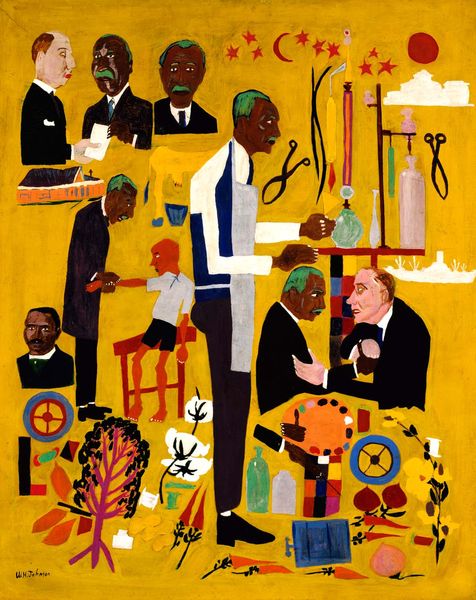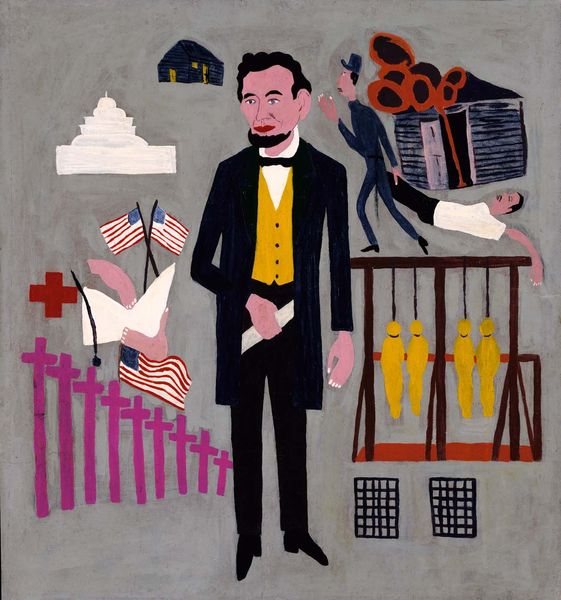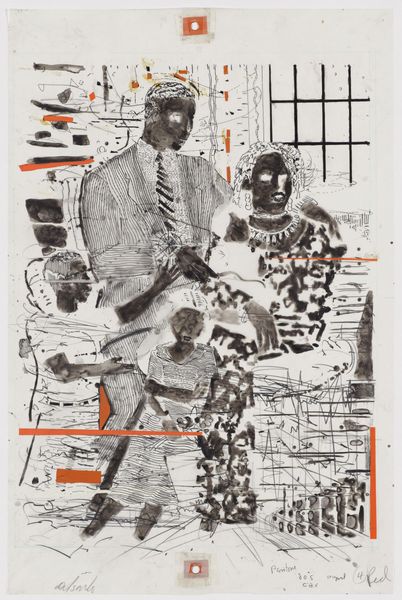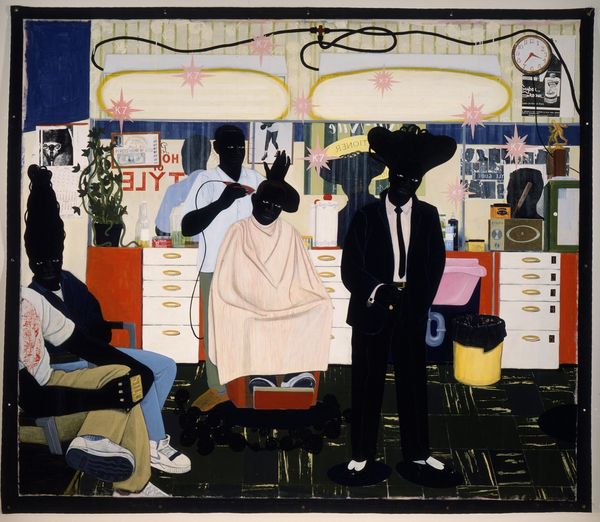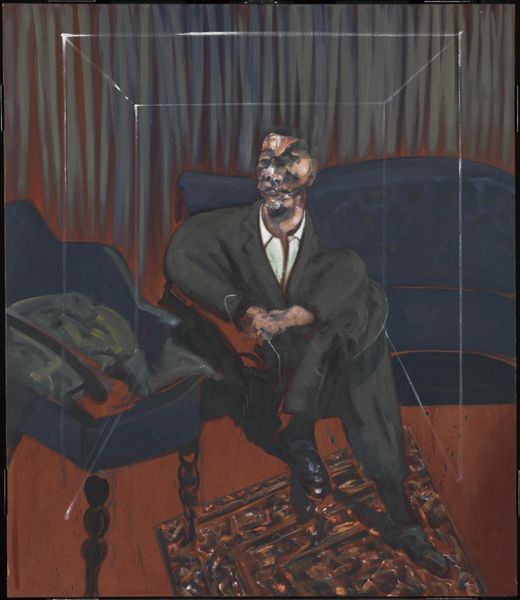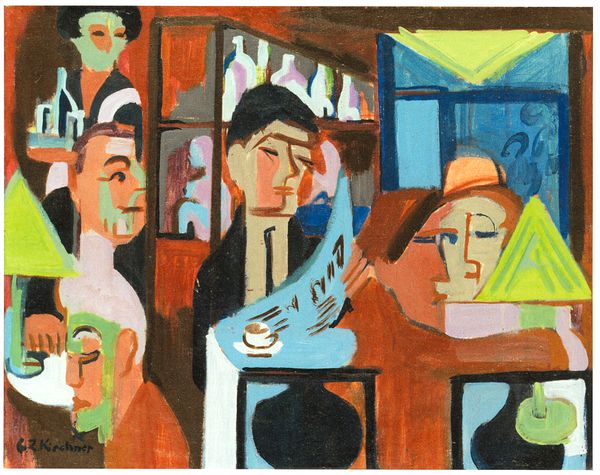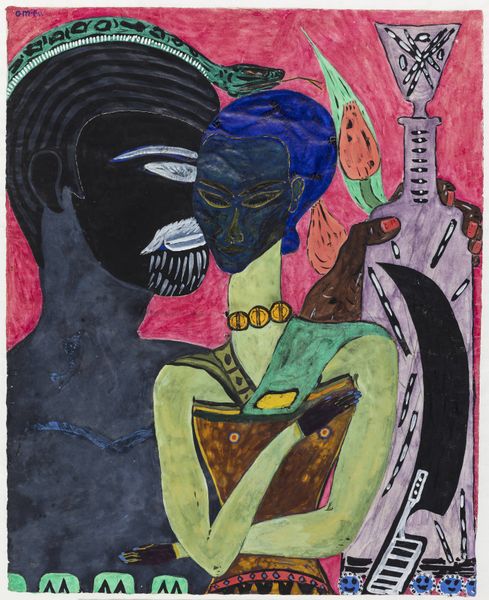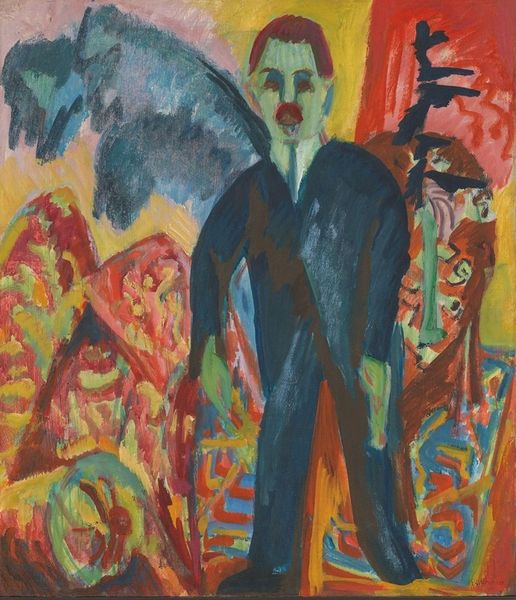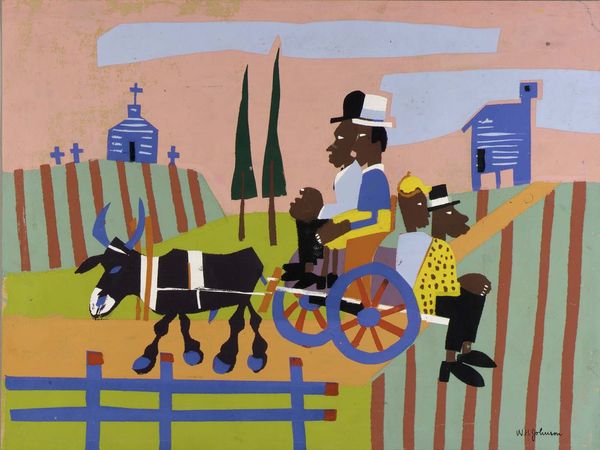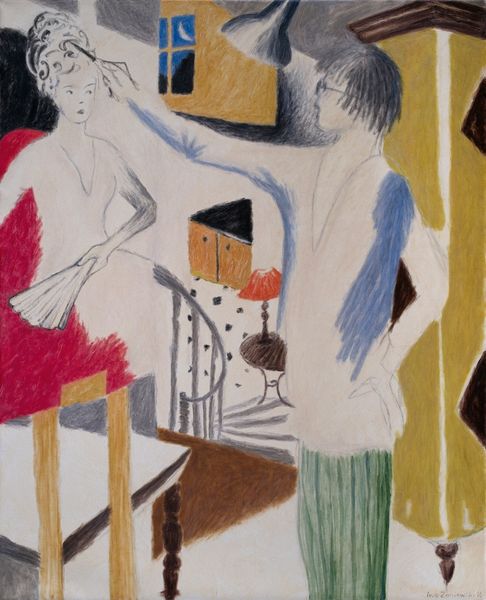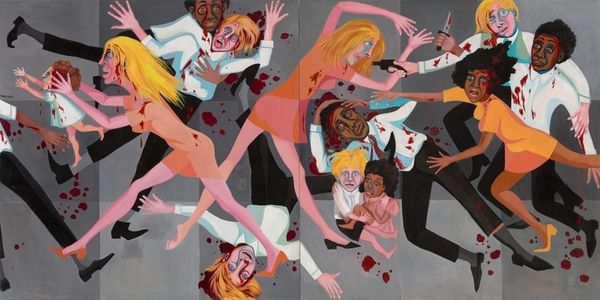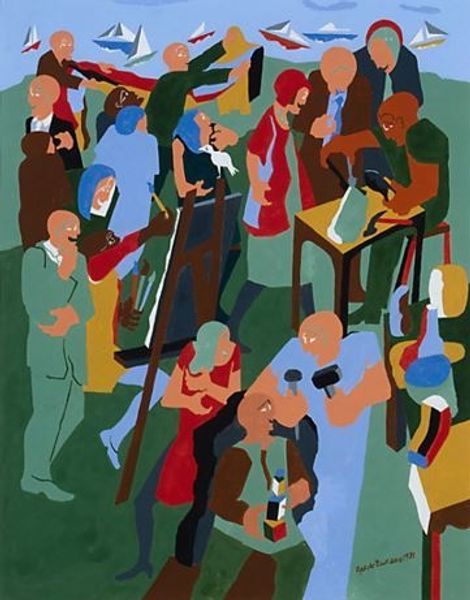
painting, acrylic-paint
#
water colours
#
narrative-art
#
painting
#
harlem-renaissance
#
folk art
#
acrylic-paint
#
figuration
#
social-realism
#
folk-art
#
naïve-art
#
naive art
#
watercolour illustration
#
history-painting
Copyright: William H. Johnson,Fair Use
Editor: William H. Johnson's "Let My People Free," painted in 1945, hits you right away with its starkness. The flat planes of color and somewhat crude figures create a powerful, unsettling scene. There’s Lincoln and Douglass standing guard over… well, it’s pretty intense. What's your interpretation of the social narrative being presented here? Curator: It's interesting that you focus on the starkness. Johnson's "naïve" style, what some might dismiss as unsophisticated, is precisely where its power lies. He intentionally uses flattened perspective and simplified figures to speak directly to the viewer, bypassing the filters of academic painting. What historical context might Johnson be drawing upon? Editor: Considering the title, I'd guess a direct reference to the emancipation and its unfulfilled promises. The figures behind Lincoln and Douglass appear to represent both the horrors of slavery and perhaps, continued racial violence even after abolition. Curator: Exactly. Johnson painted this during a time when racial injustice was rampant, even after the Civil War. Think about the Jim Crow laws, the ongoing struggle for civil rights. Johnson is not just depicting history; he is commenting on the present. How does the positioning of Lincoln and Douglass affect this interpretation? Editor: They are on either side, seemingly watching over a horrific scene of slavery and potential rebirth on the table. I feel the need to remember that the image does not depict only a single period of time or isolated events. Curator: Precisely! Consider the figures suspended by nooses and juxtaposed with the body of an enslaved person on the table along with an open book and writing utensil; the two men are presented as solemn overseers, tasked with ensuring continued awareness of historical narrative. How would this image have been received by a public dealing with a major social crisis? Editor: It feels incredibly brave to make a painting with such overt imagery during this era. Thinking about it now, seeing art that challenges institutional practices feels imperative in pushing culture forward. Curator: Agreed. And seeing it within the context of Johnson’s other work, we can really understand how his unique artistic voice contributed to a much-needed socio-political discussion. Editor: Definitely gave me something to think about.
Comments
No comments
Be the first to comment and join the conversation on the ultimate creative platform.
